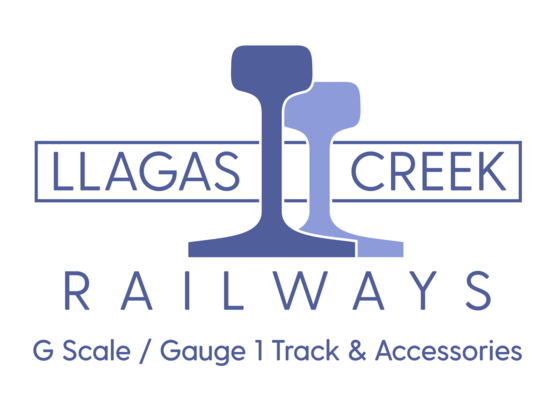How Large Should Your Expansion Gaps Be?
How Large Should Your Expansion Gaps Be?
By Mike Gates 12/27/2022
This is a question that often comes up when building a new layout, and I have been asked about expansion gaps as it pertains to our rail by many customers. Usually it is expected to be a very simple gap size that fits all rail types, which can be true if we wish to err on the side of caution... but not all metals are created equal and your gap may not need to be as large as you may think! Out of the three metals we supply our rail in: Aluminum, Brass, and Nickel Silver... the expansion length can vary greatly.

The above chart shows how much of an increase in length a 6ft section of rail will have (in inches) from a baseline temperature of 68°F to each of the indicated temperatures on the horizontal axis.
When looking at the expansion chart you can see that Aluminum has the largest rate of expansion, while Nickel Silver has the lowest. If you have an outdoor layout with aluminum rail that experiences kinking in the summer, its property of greater thermal expansion over other common model railroading metals is probably the culprit!
Choosing an expansion gap size
Option 1 (The Accurate/Overkill Way)
This is the method that will yield the smallest gaps appropriate for your layout without risking sun kinks:
- Lay out a test section of track (or bare rail) in the area of your layout that gets the most sunlight in the morning of a sunny day.
- After being in direct sunlight for 6-8hrs use an infrared thermometer (found inexpensive on Amazon) to measure how hot the rail has become in °F.
- Refer to the chart above to see how much the rail would expand from room temp to the temperature it can become outside.
- Plan to make your expansion gaps a little bit (1/16" or so) larger than the length the rail will expand according to the chart. (Example: If you are using aluminum rail and your hot rail measured 130°F, looking at the chart we can safely assume that it will expand about 0.12" or about 1/8"... so make your gaps 3/16"!)
Option 2 (Keep it simple!)
To keep things simple, lay out your track sections in direct sunlight for a few hours so the rail will heat up to around the max temperature it will be on most sunny days. (Do not stack the rail, lay each section on the ground by itself so the rail on each track section gets the most sunlight possible!)
After the track is up to temp, start assembling your layout! Grab a section and start fastening the track to your track bed. Put a 1/16" gap between the track sections to err on the side of caution in case you have a hotter day in the future.
"Ok that's all great, but I just tell me a gap size that will work for most climates and temps!"
These gaps sizes should be fine in most circumstances:
- Aluminum and Brass: 1/4" to 5/16" expansion gap
- Nickel Silver: 1/8" to 3/16" expansion gap
Some tips to prevent kinking:
- If you are using rail clamps (like SplitJaws) remember that the rail needs to be able to expand without any resistance to prevent kinking. Only clamp one side of the rail clamp tightly to one track section, and lightly clamp the other track section with the other side of the rail clamp (make sure you can feel the rail slip when pushing/pulling on it by hand). This will allow both track sections to come towards each other when expanding without being inhibited by a tightly clamped rail clamp on both sides which would result in bowing of the track.
- Assemble all your track at the same temperature (rail temp and ambient)! If you are assembling your layout one day when it is 80°F outside and you are grabbing your track out of your 68°F living room, try and continue doing the same for all layout construction days so the gaps are set with the most accuracy and less adjustment needs to be made in the future.
